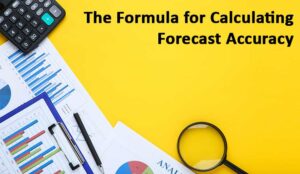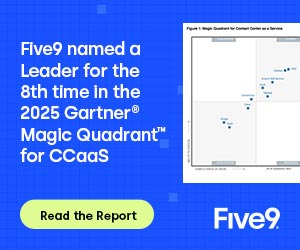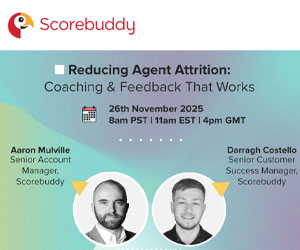Forecasting doesn’t always need to be complicated. While accurate long-term predictions require skill and analysis, there’s a surprisingly effective method that works with minimal effort.
In this instalment of our video series on the key concepts behind accurate forecasting, Call Centre Helper’s Jonty Pearce shares a simple technique that can give you up to 70% forecast accuracy – with no advanced tools or expertise.
Video: Forecasting Fundamentals: Get a 70% Forecast Accuracy With No Skill
Watch the video below to hear Jonty explain what you need to know about forecasting – focusing on how you can get a 70% forecast accuracy with no skill:
The Power of Simplicity
It’s called the persistence forecast, and the idea is simple: assume that tomorrow will look the same as today.
“Here’s a great technique… I can teach you how to get to a 70% forecast accuracy with effectively no skill.
I live in the United Kingdom; we get more differences in weather than an awful lot of places in the world. We are at the bottom end of the jet stream, it rains an awful lot, it’s often sunny, often cold, often rainy, and often all that in one day.
So, there’s a technique where you can get a 70% forecast accuracy on stuff such as the weather, and that’s a very simple technique and it’s called the persistence forecast.
Effectively, today equals tomorrow.
So, whatever is happening today will happen tomorrow. And if you do that, you’ll get roughly a 70% accuracy. If you say tomorrow’s weather is going to be the same as today. And that’s actually been borne out by all sorts of different reports.”
This method is often used in weather forecasting, and despite the UK’s famously changeable climate, using today’s weather to predict tomorrow’s gives a 70% accuracy rate. That’s been backed up by studies, including long-term data analysis from Exeter University, as Jonty continues:
“This is one that looks at a whole series of data from 1948 to 2004, and I’ve got all the details here, this is from Exeter University.
And it also works in the US as well, and you can see actually the persistence forecast for the next day is about 70% accuracy, but it does tend to drop off over time.
So, it’s a very simple technique. The persistence forecast will get you to 70% accuracy without any great skill.”
The same principle can be applied to forecasting in contact centres.
Applying It to Contact Centres
For a basic forecast, just take the same day from the previous week. If today is Wednesday, use last Wednesday’s data as a guide.
“So, my main comment for you is: in doing all your forecasts, how much better is your forecast than the same day last week?
Because obviously it varies during the week, there’s seasonality during the week. But today, for instance, I’m recording on a Wednesday, so you could actually as a baseline, take today’s forecast to be the same as last Wednesday. It’s called the persistence forecast.”
It’s not perfect, but it gives you a strong starting point, especially when you don’t have time or tools for deeper analysis.
It’s also useful as a benchmark to test the quality of your existing forecasts. If your model isn’t more accurate than a persistence forecast, it may need a rethink.
A Reliable Baseline
This technique works because contact centres often follow regular weekly patterns. While there will always be exceptions, like marketing spikes or technical issues, using last week’s numbers is often surprisingly effective.
Of course, accuracy starts to fall if you try to extend it out over several days or weeks. But for short-term forecasting, persistence is a valuable tool in your kit.
Know Where You Stand
The key takeaway is simple: ask yourself, how much better is your forecast than the same day last week? If it’s not significantly better, the persistence forecast may be just as useful – and faster to produce.
It’s a great way to get a handle on accuracy, even when you’re just starting out.
If you are looking for more great insights from Jonty, check out these next:
- Why You Need to Account for AHT Variation Across the Day
- What’s Really Skewing Your Forecasting
- Why Your Forecasters Should Always Talk to Marketing
- Understanding the AHT Glidepath to Track Agent Onboarding
Author: Jonty Pearce
Reviewed by: Robyn Coppell
Published On: 1st Sep 2025 - Last modified: 22nd Sep 2025
Read more about - Video, Forecasting, Videos





































